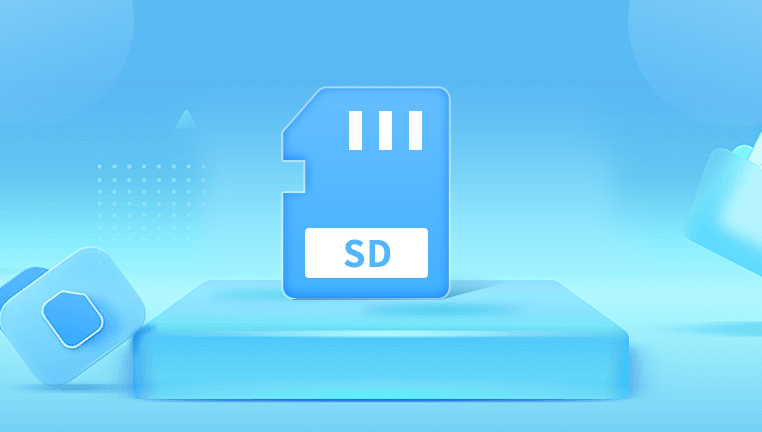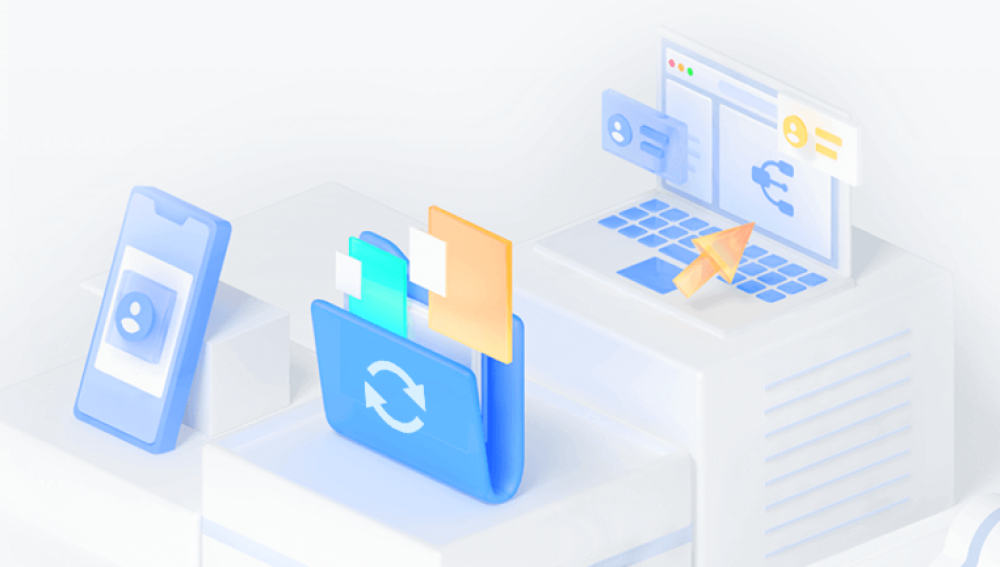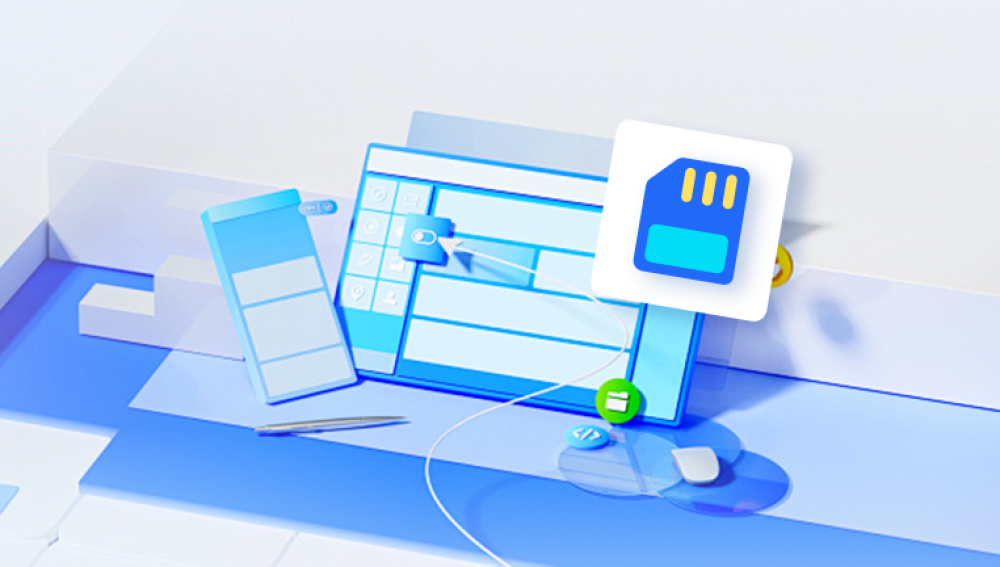Formatting an SD card is a common operation used to clear data or prepare the card for a device. However, accidental formatting or improper use can leave your SD card seemingly unusable, causing anxiety for anyone with important data on it. Fortunately, formatting does not always permanently erase data, and there are multiple ways to fix an SD card after formatting while recovering lost files.
1. SD Card Formatting
1.1 What Happens During Formatting
When you format an SD card, the file system is reinitialized, and the operating system clears the file allocation table (FAT) or master file table (MFT). There are two primary types of formatting:
Quick Format: Only removes file system references; data remains intact until overwritten.
Full Format: Clears references and overwrites every sector with zeros (on modern operating systems), making data recovery more difficult.
Even after formatting, an SD card may retain underlying data, and the storage space may still be accessible to specialized recovery tools.

1.2 Why Fixing a Formatted SD Card Is Possible
Quick Format Recovery: Data often remains recoverable because sectors aren’t overwritten.
File System Repair: Formatting sometimes corrupts the file system structure. Tools can rebuild or repair it to make the SD card functional again.
Partition Issues: SD cards may become unreadable if partitions are deleted or misconfigured. Recovery software can restore partitions.
2. Causes of SD Card Problems After Formatting
Accidental Quick Format: Deleting the file system unintentionally.
Interrupted Formatting Process: Power failure or device removal during format.
Corruption from Unsafe Removal: Removing the card without ejecting properly.
Virus or Malware Infection: Malicious software altering the file system.
Physical Damage or Wear: SD cards have a finite lifespan and may fail mechanically.
Incompatible Devices: Formatting with the wrong file system (e.g., exFAT vs FAT32).
3. Step-by-Step Recovery of Data
Before attempting repairs, recovering lost data is crucial, especially if the SD card contained important files.
Step 1: Stop Using the SD Card
Do not store new files on the SD card. Writing new data can overwrite recoverable files, reducing the success rate of recovery.
Step 2: Choose Reliable Recovery Software
Drecov Data Recovery
When an SD card is formatted, the file system table that maps where files are stored gets erased, but the actual data typically remains until new files overwrite it. Drecov Data Recovery uses advanced scanning algorithms to dive deep into the raw sectors of the SD card, reconstruct lost structures, and retrieve files in their original quality and formats.
The recovery process is simple:
Insert the formatted SD card into your computer via a card reader.
Open Drecov Data Recovery and select the SD card as the target drive.
Choose a deep scan for maximum recovery results.
Preview the files that can be restored.
Save the recovered data to a secure location (never back to the same SD card).
Drecov Data Recovery supports all major SD card types—microSD, SDHC, and SDXC—ensuring compatibility with cameras, drones, dash cams, and mobile devices. Whether you’ve lost cherished family photos, important work documents, or high-definition videos, the software helps you recover them with ease.
Step 3: Connect the SD Card
Use a stable card reader directly connected to a computer. Avoid hubs or adapters that may disconnect.
Step 4: Scan the SD Card
Run a deep scan to search the entire memory for lost files. Depending on card size, this may take several hours.
Step 5: Preview and Recover Files
Preview detected files to ensure integrity. Recover them to a different drive, not the SD card itself, to avoid overwriting data.
4. Repairing the SD Card
Once files are recovered, you can attempt to fix the SD card itself.
4.1 Check Disk Utility (Windows)
Insert the SD card into your PC.
Open This PC, right-click the SD card, and select Properties → Tools → Check.
Windows will scan for file system errors and attempt repairs.
4.2 Using Command Prompt
Open Command Prompt as Administrator.
Type:
chkdsk X: /f /r
Replace X: with your SD card letter.
Press Enter. CHKDSK will locate and fix file system errors and attempt recovery of readable data.
4.3 Reformatting Safely
If the SD card is still unusable, a full format can sometimes restore functionality. Use the appropriate file system for your device (FAT32 for cameras, exFAT for large storage).
4.4 SD Card Formatter Tool
The SD Association Formatter is a free tool designed specifically for SD cards. It performs low-level formatting safely, improving compatibility and performance.
5. Preventing Future SD Card Issues
Eject Properly: Always use “Safely Remove Hardware” before removing the card.
Avoid Interruptions: Ensure the device has power during read/write operations.
Use Reliable Devices: Cheap card readers can cause corruption.
Regular Backups: Keep copies of important files in multiple locations.
Monitor Card Health: Use tools to check for wear or errors.
Virus Protection: Avoid using cards on infected systems.
6. Advanced Recovery Scenarios
6.1 Corrupted Partition Recovery
If formatting caused partition loss, tools like TestDisk can rebuild partitions and restore access to files without full formatting.
6.2 RAW SD Card Recovery
Sometimes formatting leaves the card in a RAW state. Recovery software can read raw sectors and extract files based on headers and metadata.
6.3 Partial Formatting or Interrupted Process
If formatting was interrupted, some sectors may still contain intact files. Deep scanning can often recover these fragments.
7. Using Drecov Data Recovery to Restore Formatted SD Cards
Drecov Data Recovery simplifies recovery:
Connect the formatted SD card.
Launch Panda and select the SD card.
Run a deep scan to locate recoverable files.
Preview photos, videos, documents, or other media.
Recover files to a safe location.
Panda ensures files are restored in their original format, unlike raw recovery which may lose extensions or metadata.
8. Common Issues During Recovery
Files appear corrupted – Use multiple recovery scans or different software.
Drive not recognized – Try another card reader or computer.
Slow recovery – Deep scans on large SD cards can take hours; be patient.
Partial recovery – Some files may be overwritten or damaged beyond repair.
9. When Professional Help is Needed
If software fails or the SD card has physical damage, professional recovery services offer:
Cleanroom repair for damaged electronics
Sector-by-sector extraction
Reconstruction of partially overwritten data
Costs range from $100 to $2.000+ depending on damage and storage size.
10. Case Studies
Photographer’s SD Card Formatted Accidentally: Using Drecov Data Recovery, 100% of JPEG and RAW images were restored.
USB SD Card Quick Format: Recovered school projects and video files without overwriting the drive.
Corrupted SD Card in DSLR: CHKDSK and SD Formatter fixed the card after partial recovery.
11. Final Thoughts
Fixing a formatted SD card involves two key steps: recovering lost files and repairing the card. Most quick formats are fully recoverable, while full formats or physical damage require more advanced tools or professional services.
Drecov Data Recovery is an excellent solution for recovering formatted SD cards, restoring files in their original formats efficiently and securely. Combined with careful repair, formatting awareness, and backup practices, SD card data loss can be effectively managed, ensuring your files remain safe and accessible.




